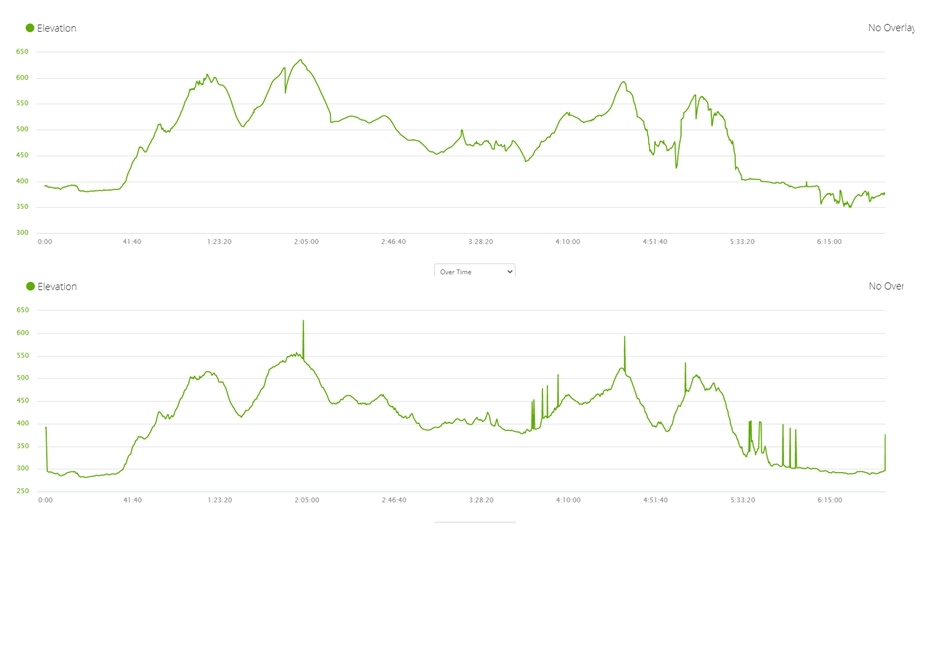The first graph is straight from the Activity without correction. There is a minor issue at about 1:50, then 5:00 and maybe two sharp dips 5:10 and 5:15. Also the last 40 minutes were pretty flat.
After having enabled the corrections, however, the graph doesn't look much better. All of the sudden I have weird spikes all over the place even though most of the previous sharp dips have been evened out correctly.
Also elevation gain differs by quite a lot. Device says 1200m but with corrections it's 900m. Now I'm not really sure which one to believe




